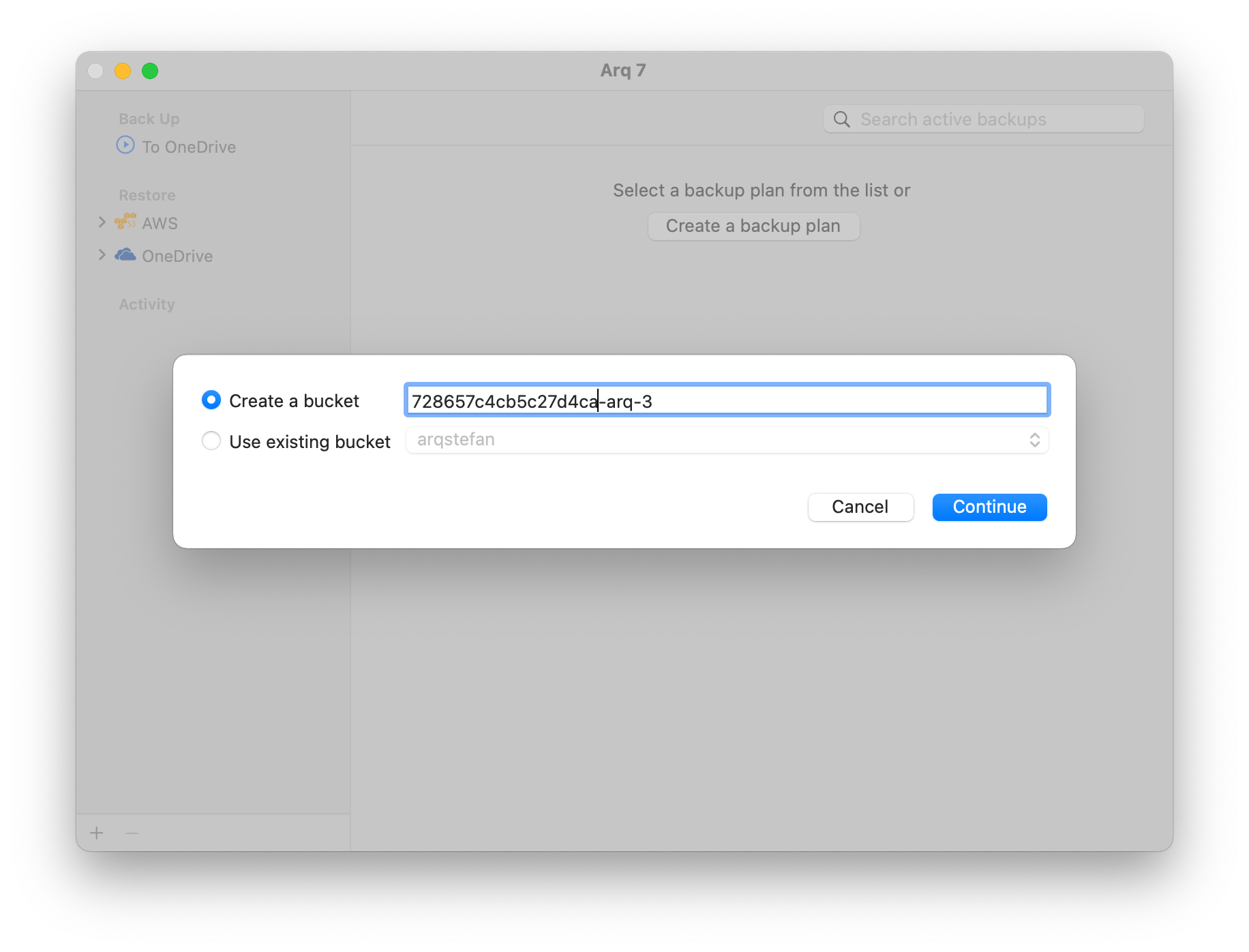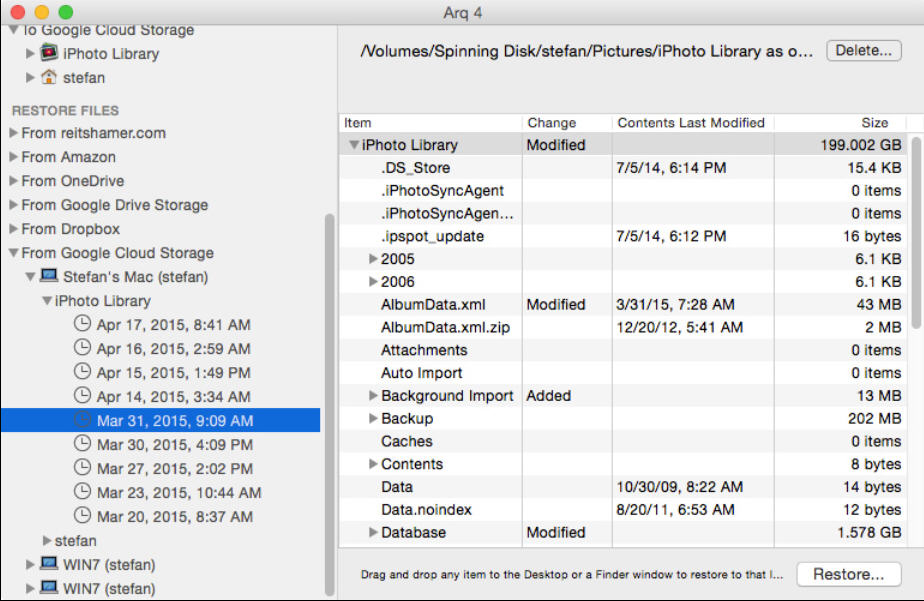

If you are interested in a bit of control, there are several ways to specify how Arq works.
Arq cloud backup windows#
So it was fantastic that Arq does all the heavy lifting from a Windows Service, so I do not need to log in and ensure that a UI application has started correctly. If, like me your data is stored on a headless server, it is critical that the solution works without requiring console access. And while I am not sure that I would just hand it off to just any technophobe, with a little coaching it would be fine. As an added bonus the UI is simple, approachable, and straightforward enough that I never had to hit up the help files to get started. Arq also offers data de-duplication (same data only uploads once) and time based file restore which completes the off premises backup story. There are some other great features that really make it stand out compared to applications that just copy data across the wire. So the data that ends up on the remote system is encrypted before it leaves your network and no one but the NSA, or a GPU farmer with too much time on their hands will be able to access it in transit or at rest on the Cloud provider’s disk. Your key, that you create per provider, and only you have. Thank you Arq.Īrq is a simple application that supports all the major Cloud storage providers (Amazon AWS/Glacier/Cloud Drive, Microsoft OneDrive, Dropbox, and Google Drive/Cloud Storage), but the real trick to it is that it leverages client side encryption with a user provided key. Fortunately though, I recently found a solution that I am comfortable with – something that protects the data itself, and significantly reduces the risk of data leakage if there is a breach.

They are all big juicy targets and the risk of a breach just seems more likely (cough, iCloud) than the type of event that would wipe away all of my home storage. Frankly, I just do not have enough faith in any cloud storage provider’s security. Leveraging RAID1 (redundancy), multiple hard disk drives (backup), and DVD archival (format shift) but taking my important data off premises has been a sticking point because of trust, and simplicity. The first two stages (multiple copies, multiple formats) have been in place for years. Unwilling to take the final step towards a truly comprehensive data protection plan.

Cloudberry has great flexibility and options, but I’m uncertain about it now.Between us, I have been procrastinating.
Arq cloud backup software#
My only remedy, I believe, is to look for backup software that has better stability with the new OSX design. If I understand it right, sometimes copied volumes get placed back on Apple’s hidden volume. I read somewhere of similar problems with other backup software, even Time Machine, which can apparently run afoul of Apple’s security design of having two disk volumes, one for user data, and the other for system files (which is mostly hidden?). I finally solved it (or seem to have solved it) by stopping my backup software, Cloudberry, and trashing the large number of backup files it had been placing on my drive, the one it was suppose to be copying (250gb worth). I used all kinds of tools to examine my drive, eliminate files, and look for culprits. I was slowly losing drive space over the course several months and hardly noticed it but then realized the issue after upgrading to Catalina as the rate of loss increased. I’ve been thinking of switching to Arq so this has been an interesting conversation to follow.


 0 kommentar(er)
0 kommentar(er)
